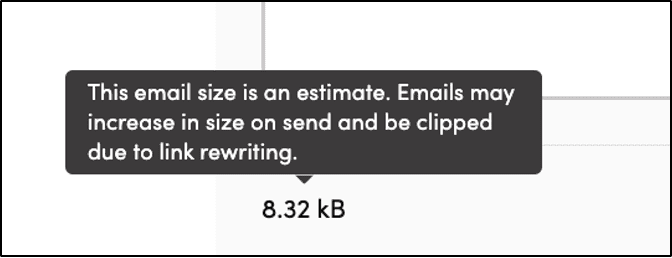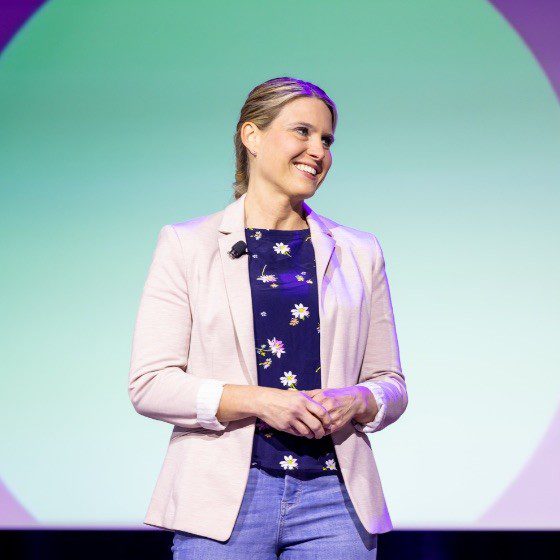There is no worse feeling than spending hours crafting the perfect email only to find that once it hits the recipient’s inbox, only half the message displays to the recipients. This is called email clipping, and it’s a direct result of your message being larger than the internet service provider (ISP) allows.
![[Message clipped] View entire message](https://iterable.com/wp-content/uploads/2024/10/Email-Clipping-1.png)
![[Message clipped] View entire message](https://iterable.com/wp-content/uploads/2024/10/Email-Clipping-1.png)
What Is Email Clipping?
Most notably, Gmail has specific restrictions in place on how large an email message can be. The maximum size allowed is 102 KB before the message gets clipped.
What’s important to clarify is that email length and email size are not the same thing. An email can be lengthy and still fall well under the 102 KB limit.
ISPs analyze the size of your email based on all of the code used to create the message, both seen and unseen. HTML, CSS, the length of link addresses, and image sizes all come into play when factoring in the total message size.
What’s challenging is that when using dynamic content, it is really hard to predict an email’s actual size until the message is sent and all the dynamic elements are in the recipient’s inbox.
How Can You Prevent Your Email From Being Clipped?
Below are four key measures you can take pre-send to ensure your message falls below 102 KB.
1. Evaluate your content
According to Litmus, the average reader only spends 8.97 seconds reading an email. That is not a lot of time to ensure that you get your message across and that it resonates with the reader. This is why the relevancy of the content you provide is critical to engaging the reader from the start. When creating your message, ensure that it is relevant to the audience and personalized. Don’t take up space and time with fluff that the reader will likely ignore.
We can’t predict when an ISP may decide to change the size allowed for messages on web and mobile. Prioritizing the highest-value content in the top portion of your message will ensure that if email clipping sizes change over time, your most important content is up top and doesn’t risk falling below the fold.
2. Check the code
Code bloat is real. ISPs factor in the total size of the email, not by what the reader sees but by the thousands of characters behind the scenes in the code.
- Clean up unnecessary code. Work with a designer or technical engineer on your team to make sure that your email code is optimized and doesn’t contain unnecessary line breaks, padding, or other code bloat that can artificially raise the email size.
- Reduce the number of links. Think about how many links are truly necessary given the goal of the email and try to limit them to the most relevant.
- Shorten links. Find ways to shorten the links using a link-shortening service.
- Reduce image sizes. Evaluate the images you are using and adjust the image type (PNG, GIF, etc.) to help minimize the size without compromising the quality of the images.
3. Preview prior to sending
The best way to get a full picture of what your reader will receive is to send yourself a proof. By sending a proof populated with data, you will get the closest to the actual view your reader will see and can highlight early on if there is any probability of your message being clipped.
4. Understand what happens at the time of send
Check with your marketing automation provider about added characters pre-send. Oftentimes, once your message is ready to send, platforms will add additional characters to links and messages for tracking purposes. This is what results in you, the marketer, being able to track and see the results of the email through reporting and dashboards.
Because this code is added at the time of send, it is not factored into the message size you may see displayed as you are crafting your message. While this is something you can’t avoid, if you want any insight into how your message performs, you can seek to understand what additional characters are added and factor that into consideration as you draft your message.
How Iterable Handles Email Clipping
Thankfully, Iterable takes email size into consideration from the get-go. As you are building your template or campaign, we display the estimated size of your email based on the content you have created.
One caveat is that this is just an estimate. Iterable does not currently factor in the dynamic rendering of content in that estimate, nor does it highlight the additional characters added to links and the message pre-send.
On the preview page, you can view the estimated size, as seen in the image below.


Final Thoughts
While none of us can predict the future and how ISPs may evolve in their considerations of email size, you can take steps to help reduce the chances of your message being clipped.
Taking time to evaluate your content, writing minimal, clean code, and reducing the number of links and images are all measures you can take to avoid your readers encountering the dreaded [message clipped].
To take your email marketing program to the next level, contact our experts and schedule a demo today.

































